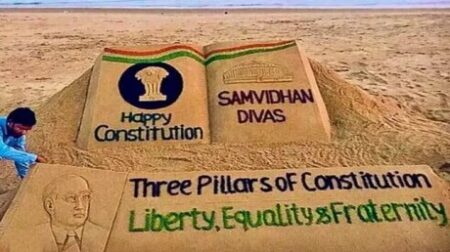Elections are around the corner, with every religion casting its votes in the state of Uttar Pradesh. The atmosphere hustling in UP is making versatile commotion among the state’s people. With rallies being conducted and campaigns and public meetings being held, the grip over the state would make the election a roller coaster for the population residing in Uttar Pradesh.
Various political parties are keeping their grip of hold very firm over the state of UP; considering the situation and analyzing the surrounding in UP, many political analysts are predicting that this time, the Muslim population could impact the UP state legislative elections very majorly. Currently, the Muslims residing and carrying on their occupation in the state is approximately 19.26%.
The population is not that huge; still, they play a significant role in making the government in Uttar Pradesh. A recent cover of facts revealed that the bustle of the population voted in the state of Uttar Pradesh during the first phase of the elections, which could change the fate of the political parties as one vote can differ a lot.
The game of Votes
During the start of the campaign, political parties majorly focused on dignifying the religious sentiments towards the elections. Be that BJP, BSP, or Samajwadi Party, all the leaders from their respective parties have mentioned anyone stat or fact regarding the above topic through their public meetings or political campaign.
The voting game in this state is very ancient in the era, wherein leaders from every party took out the religious sentiments in between and dropped the message they sought that was right to the public. According to the Muslim voters of Uttar Pradesh, “from the last ten years, the value of Muslim voter is equally compared to an untouchable. We as voters are constantly threatened, used as fuel, as a tool to fight with parties such as BJP who promote Hindutva.” Said a youngster Abuzzar Usmani who came to listen to the speech of Owaisi.
Taking a point of political cum religious leaders All India Majlis-E-Ittehadul Muslimeen (AIMIM) president Asaduddin Owaisi, who brought the “hijab row” case to the elections were held at Uttar Pradesh. Though he could not complete his rally at UP because of some technical failure in his helicopter, his message was effectively delivered by the workers of his troop and some other political party.

Manipulating the Muslim Votes
For years, the religious sentiments were treated as a weapon of suction for votes, or in laypeople language, they can be considered the voting bank for various political parties. Adding to it, the people of UP are naive and very volatile about these topics. To conquer the whole state as a bumper, there are times when political leaders manipulate the words and try to deliver the notion they want to fit into the mind of people.
As places like Deoband tend to grow with the Muslim population, the pursuit for keeping them “in hand” continued for all the political parties to get their use for the correct time. Deoband is a town that holds 163 seats across the 27 districts of Uttar Pradesh, wherein the Muslim stake is taller and has better value to get the whole constituency, rather than few seats. Taking the statistics of the state, alone Deoband constituency has a population of Muslims at around 70%, but the accounts for Muslim voters in the town is just 40%. Still, the leaders have very high hope from this constituency.
Closure by Elections
This time during the election, it is observed that the wave of the vote is towards the SP-RLD alliance, giving them instant hopes to get into the power of UP once again. RLD president of Deoband, Naseem Zaidi, says, “The 2013 Muzaffarnagar riots divided us, but we are coming back together this time.” He explains inside the Samajwadi Party’s Deoband’s office.
He also describes that his party’s existence owes a lot towards the brotherhood Muslim and Jats, who are RLD’s main base of voters. Keeping all the factors in mind, the Samajwadi Party is very excited with its base of Muslim voters. At the same time, BJP is yet to understand the stance and importance of the votes from the minority division in UP.
Published by- Aashay Bhujbal
Edited by- Kritika Kashyap













